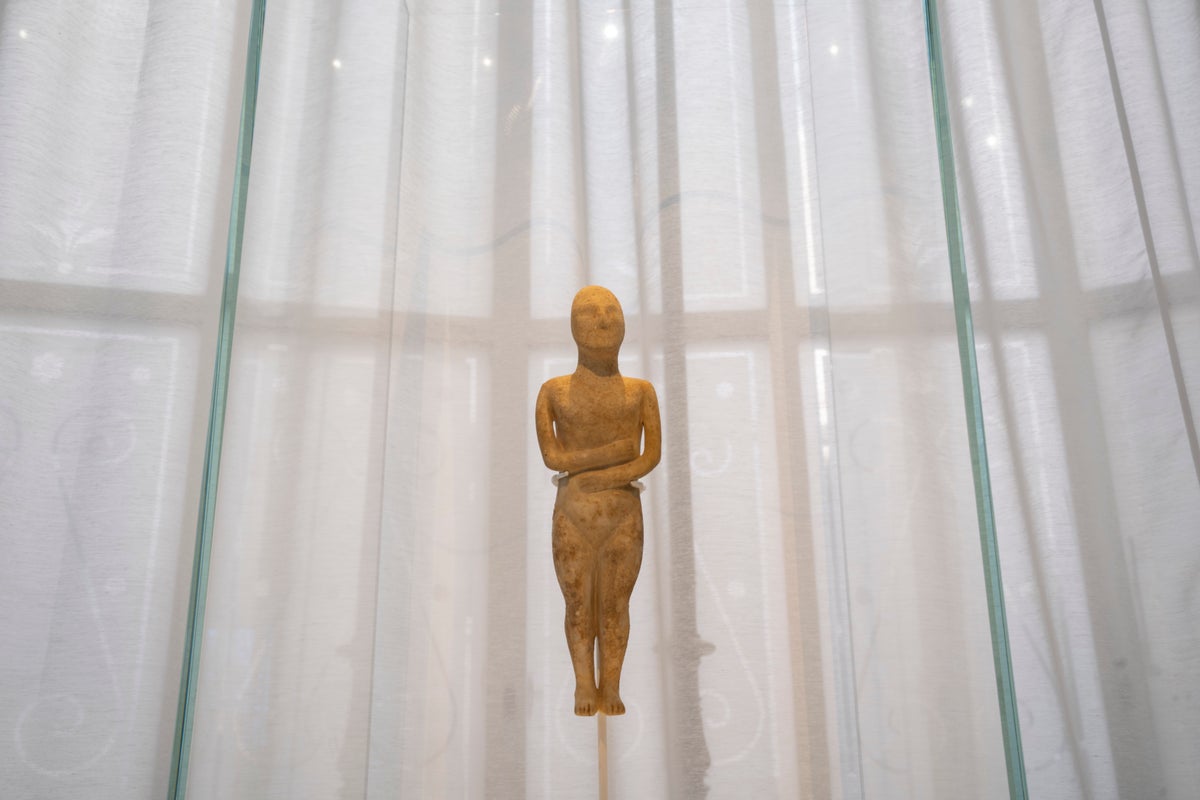
It’s a first symbolic step in a homecoming that will long outlast the 10-year Odyssey of ancient myth.
For decades, an important part of Greece's cultural heritage sparkled only for the very few in a U.S. billionaire's private collection, until a groundbreaking deal for its gradual return to Athens. Now 15 of the prehistoric masterpieces have gone on public view for the first time in a temporary display in Athens, ahead of their final return, together with the remaining 146 works, by the year 2048.
But Greek opposition politicians, and some archaeologists, say that's too long. They say the government should have fought in court to recoup the entire collection quicker, arguing it was looted from ancient sites on Greek islands and smuggled away.
Culture Minister Lina Mendoni said the August deal — which also involved New York’s Metropolitan Museum of Art — was the best possible one it could get.
“A court process is a very arduous affair that requires very strong documentation which, in most cases, we lack,” she said Tuesday at a presentation of the exhibition, which opened last week and will run for a year at the Athens Museum of Cycladic Art — itself based on a private Greek collection.
“It is an unfortunate fact that finds from illegal excavations exist all over the world,” she added. “So, whichever of these belong to Greece, our policy is to bring them back.”
Dating from 5300-2200 B.C., the artifacts were acquired by Leonard N. Stern, an 84-year-old pet supplies and real estate businessman. Most belong to the Cycladic civilization that flourished in the Cyclades islands between 3,200-2000 B.C., whose elegantly abstract but enigmatic white marble figurines inspired leading 20th century artists.
The 15 works on display in Athens are striking. One 86-centimeter (34-inch) female figurine retains eyes and eyebrows in low relief. A diminutive female figure standing on the head of a larger one is one of only three known in existence. A marble head bears traces of painted red dots on its cheeks and neck as — like later ancient Greek sculpture — many of the Cycladic figurines were initially colored.
Little is known of their original function, largely because so many of the surviving Cycladic artifacts were hastily unearthed by looters. This cheats archaeologists of the clues that a proper excavation could provide.
“When an artifact, from a broken piece of pottery to a statue, is removed from its context, the environment in which it is found, it ceases to be a piece of historic evidence and simply becomes an artwork,” Mendoni said. “The loss is immense."
“If we accept that our past is part of our identity, objects that come from illegal excavations deprive us of a smaller or larger part of that identity,” she added.
Mendoni said Greece has increased efforts — working with other countries — to discourage the trade in looted antiquities and has observed a decline in antiquities collecting.
The 15 works will be sent to the Met, to be displayed with the rest from 2023 to 2048. The returns to Greece will start in 2033 and continue through 2048.







